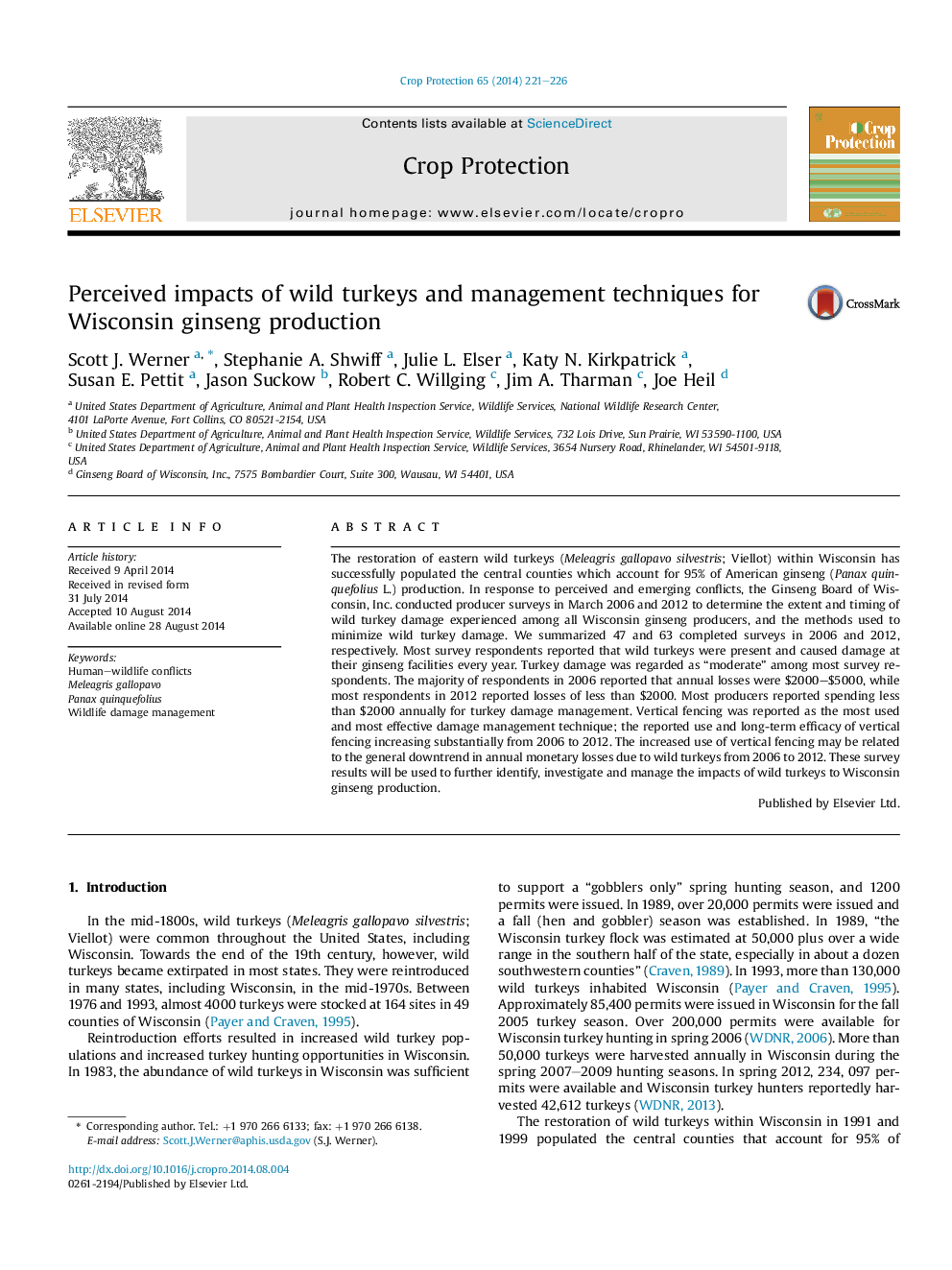| Article ID | Journal | Published Year | Pages | File Type |
|---|---|---|---|---|
| 4505828 | Crop Protection | 2014 | 6 Pages |
•110 respondents from 2006 to 2012 WI ginseng producer surveys.•Most respondents reported turkeys present and cause damage each year.•Most respondents reportedly spend <$2000 annually for turkey damage management.•Vertical fencing was reported as the most used/effective management technique.
The restoration of eastern wild turkeys (Meleagris gallopavo silvestris; Viellot) within Wisconsin has successfully populated the central counties which account for 95% of American ginseng (Panax quinquefolius L.) production. In response to perceived and emerging conflicts, the Ginseng Board of Wisconsin, Inc. conducted producer surveys in March 2006 and 2012 to determine the extent and timing of wild turkey damage experienced among all Wisconsin ginseng producers, and the methods used to minimize wild turkey damage. We summarized 47 and 63 completed surveys in 2006 and 2012, respectively. Most survey respondents reported that wild turkeys were present and caused damage at their ginseng facilities every year. Turkey damage was regarded as “moderate” among most survey respondents. The majority of respondents in 2006 reported that annual losses were $2000–$5000, while most respondents in 2012 reported losses of less than $2000. Most producers reported spending less than $2000 annually for turkey damage management. Vertical fencing was reported as the most used and most effective damage management technique; the reported use and long-term efficacy of vertical fencing increasing substantially from 2006 to 2012. The increased use of vertical fencing may be related to the general downtrend in annual monetary losses due to wild turkeys from 2006 to 2012. These survey results will be used to further identify, investigate and manage the impacts of wild turkeys to Wisconsin ginseng production.
